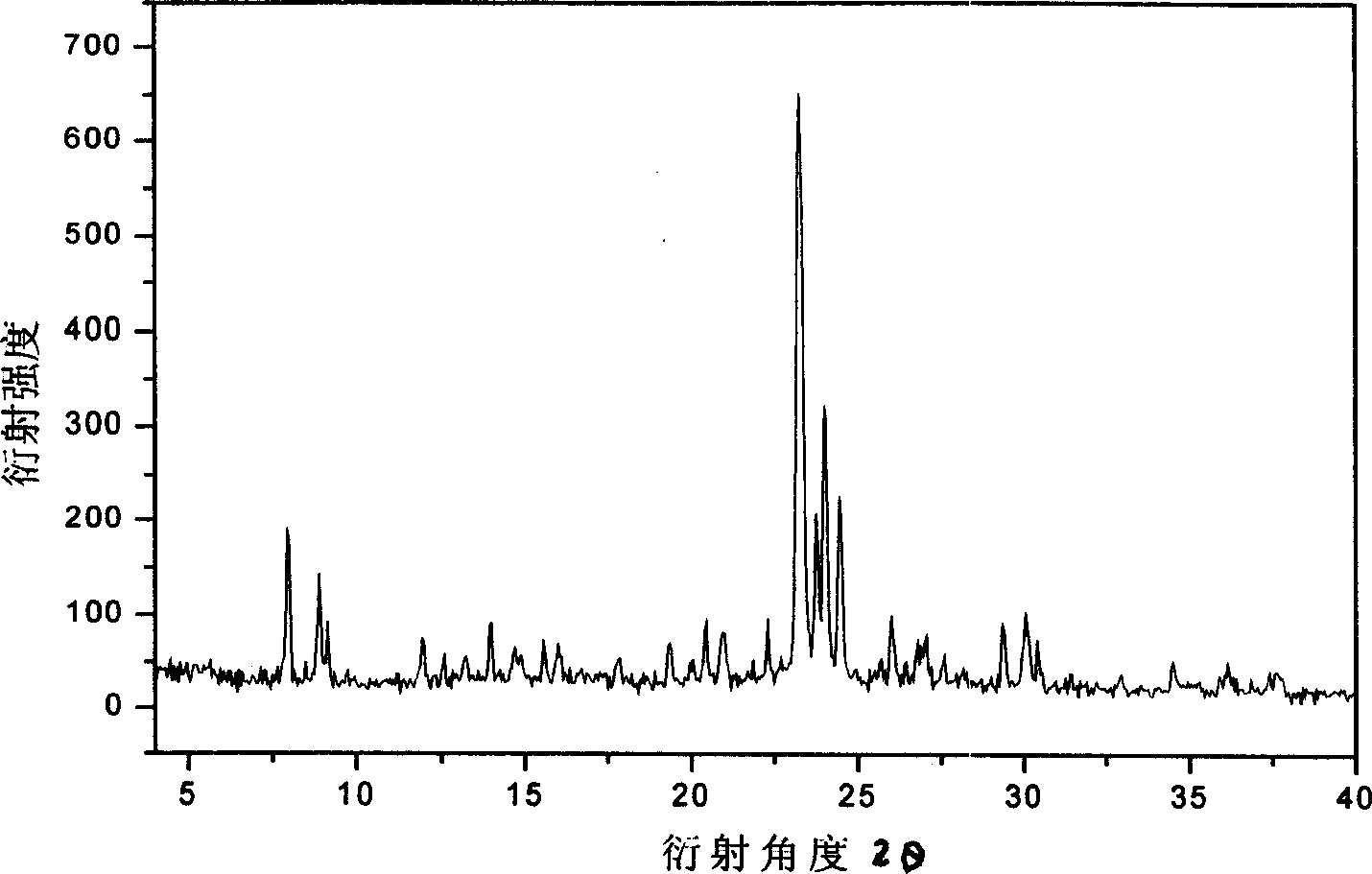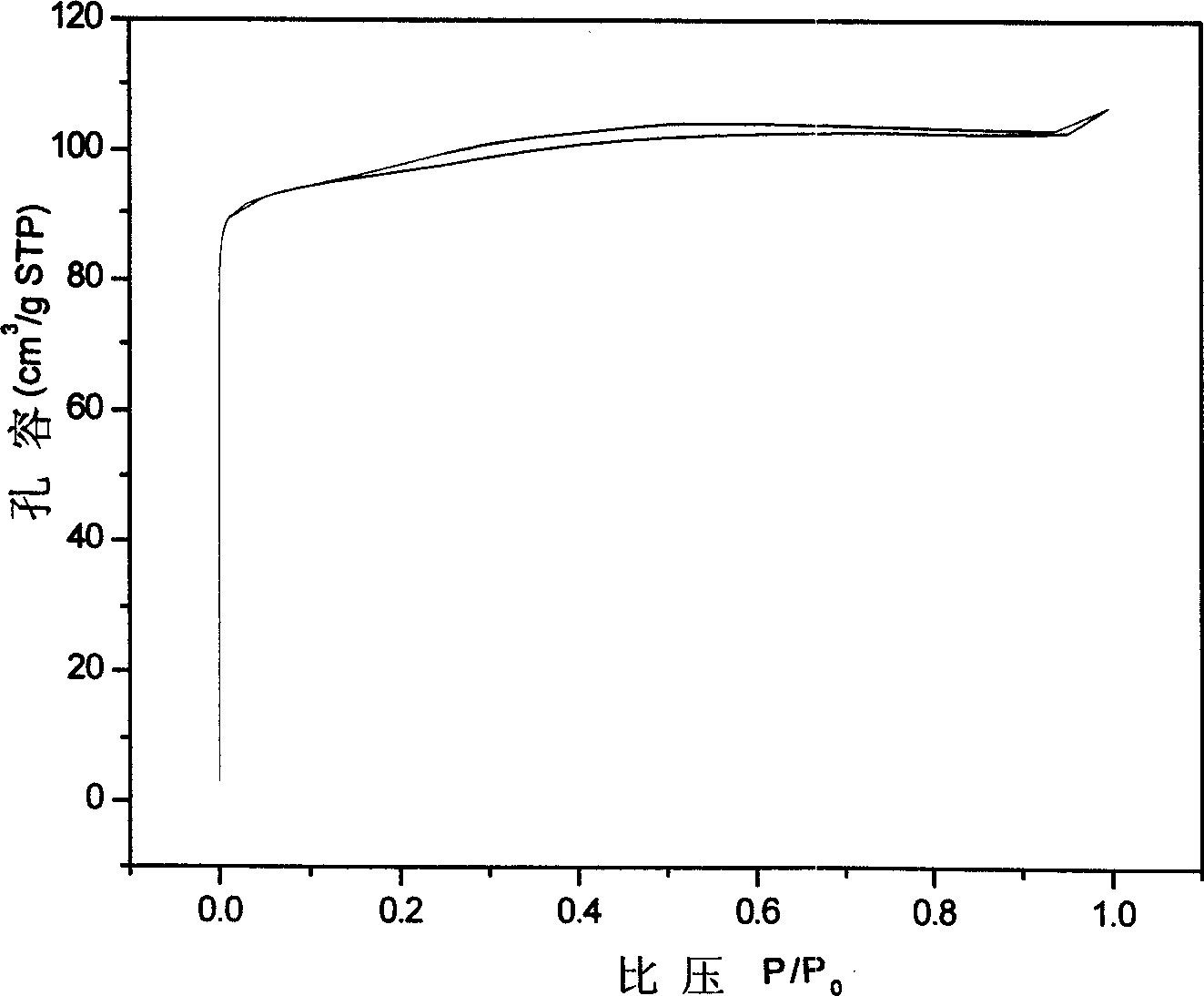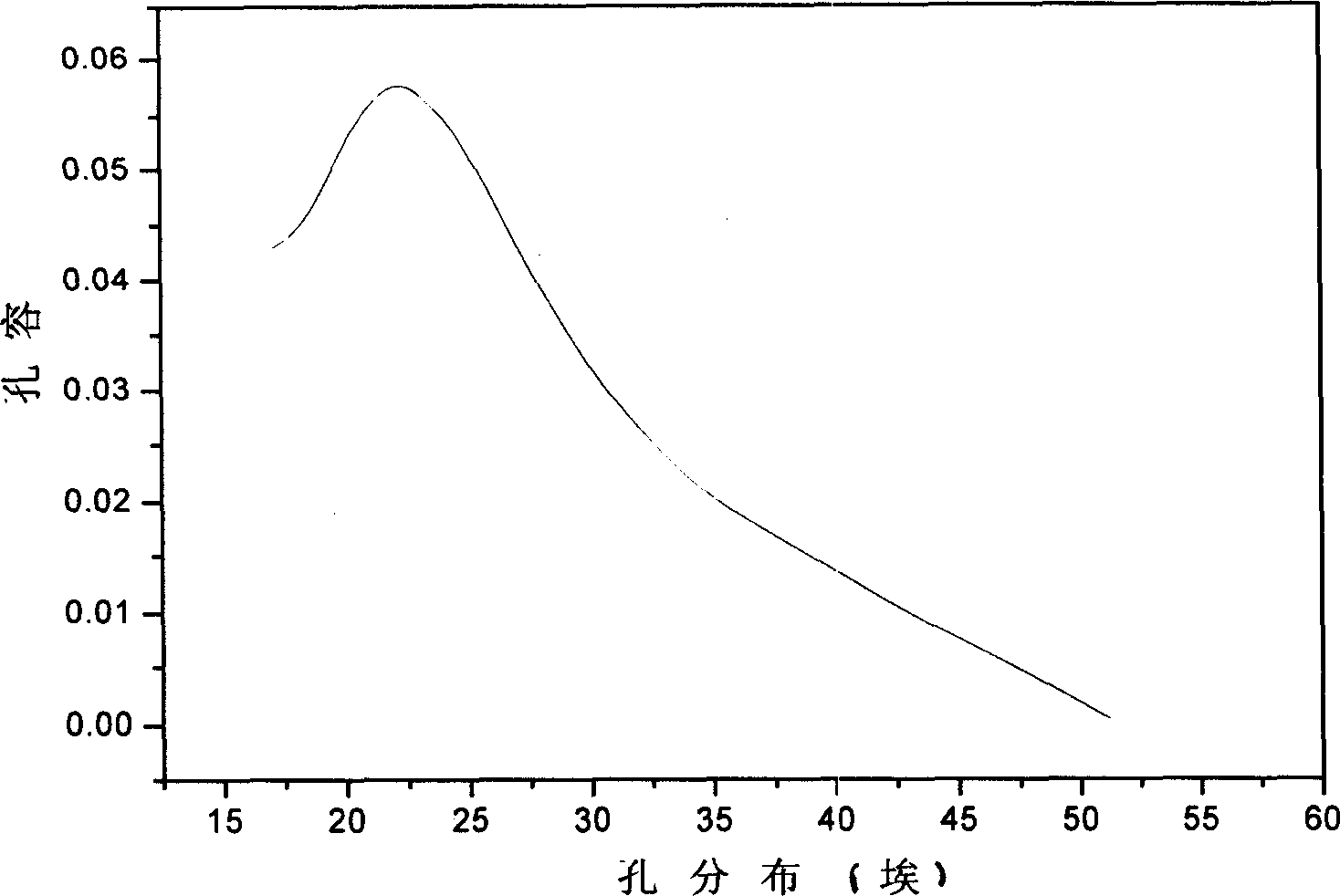High molecule polymer template synthetic composite hole zeolite molecular sieve and its preparing method
A high-molecular polymer and zeolite molecular sieve technology, applied in the direction of crystalline aluminosilicate zeolite, etc., can solve the problems of large specific surface area, low acidity, high preparation cost, etc., and achieve the effect of high catalytic activity
- Summary
- Abstract
- Description
- Claims
- Application Information
AI Technical Summary
Problems solved by technology
Method used
Image
Examples
Embodiment 1
[0020] Example 1: Synthesis of composite pore structure ZSM-5 with polyquaternium and TPAOH as a composite template
[0021] Synthetic raw materials: polyquaternium-7, TPAOH, tetraethyl orthosilicate, NaAlO 2
[0022] Synthetic ratio: (0.01~0.1) Al 2 o 3 / SiO 2 / (0.01~0.1)Na 2 O / (0.04~1.8)TPAOH / (10~60)H 2 o
[0023] Synthesis steps: first dissolve appropriate amount of TPAOH in water, and mix NaAlO 2 and tetraethyl orthosilicate, after the solution is clarified, age at 40-120°C for 1-8 hours, then introduce polyquaternium-7 accounting for 5%-25% of the total mass of the solution, and continue stirring until the added The polymer is completely dissolved, the obtained sol is vigorously stirred at 15-35°C for 4-10 hours, put into a stainless steel reactor with a polytetrafluoroethylene liner, and left to react at 140-180°C for 24-168 hours. Finally, the sample is raised to 550°C at a rate of 1°C / min, and calcined at a temperature of 545-555°C for 6-8 hours.
[0024] Prep...
Embodiment 2
[0030] Example 2: Synthesis of composite pore structure BETA with polyquaternium and TEAOH as a composite template
[0031] Synthetic raw materials: polyquaternium-6, TEAOH, white carbon black, NaAlO 2 , sodium hydroxide
[0032] Synthetic ratio: (0.01~0.03) Al 2 o 3 / SiO 2 / (0.03~0.1)Na 2O / (0.1~1)TEAOH / (10~40)H 2 o
[0033] Synthesis steps: first dissolve appropriate amount of TEAOH in water, and mix NaAlO with a certain stirring intensity 2 and sodium hydroxide, add white carbon black after dissolving, stir until the solution is clarified, age at 60-140°C for 1-8 hours, and then add 5%-25% of the total mass of the solution polyquaternium- 6. Continue to stir until the added polymer is completely dissolved, and the obtained sol is vigorously stirred at 15-35°C for 4-10 hours, then put it into a stainless steel reactor lined with polytetrafluoroethylene and let it stand at 140-180°C React for 24 to 120 hours. Finally, the sample is raised to 550°C at a rate of 1°C / min...
Embodiment 3
[0037] Example 3: Using polyquaternium as a template to synthesize a composite pore structure Y
[0038] Synthetic raw materials: polyquaternium-7, Y-directing agent, NaAlO 2 , Al 2 (SO 4 ) 3 , water glass.
[0039] Synthetic ratio: Al 2 o 3 / (7.6~16)SiO 2 / (2.9~6.6)Na 2 O / (175~320)H 2 o
[0040] Synthesis steps: first dissolve water glass in water, and mix Y-directing agent, NaAlO 2 and Al 2 (SO 4 ) 3 Add, the dosage of Y-directing agent is 5%~20% of the total amount of silicon source in the synthetic solution. After the solution is stirred evenly, introduce polyquaternium-7 accounting for 5%~25% of the total mass of the solution, and continue stirring for 4~10 Hours, put it into a stainless steel reaction kettle with a polytetrafluoroethylene liner and let it stand at 100-110°C for 20-24 hours. Finally, the sample is raised to 550°C at a rate of 1°C / min, and calcined at a temperature of 545-555°C for 6-8 hours.
[0041] The preparation process of the HY cataly...
PUM
 Login to View More
Login to View More Abstract
Description
Claims
Application Information
 Login to View More
Login to View More - R&D
- Intellectual Property
- Life Sciences
- Materials
- Tech Scout
- Unparalleled Data Quality
- Higher Quality Content
- 60% Fewer Hallucinations
Browse by: Latest US Patents, China's latest patents, Technical Efficacy Thesaurus, Application Domain, Technology Topic, Popular Technical Reports.
© 2025 PatSnap. All rights reserved.Legal|Privacy policy|Modern Slavery Act Transparency Statement|Sitemap|About US| Contact US: help@patsnap.com



